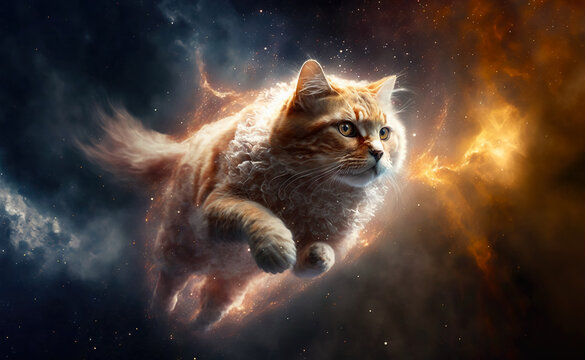Cat Anatomy and Physiology
Cats are one of the most popular pets worldwide, captivating human hearts with their grace, playful nature, and affectionate demeanor. However, understanding their intricate anatomy and physiology is essential to providing optimal care and fostering a strong bond with these enigmatic creatures. This comprehensive guide will delve into the various systems and structures that make up a cat’s body, providing insights into their biological functions and overall well-being.

Skeletal System: A Framework of Movement
The cat’s skeletal system consists of approximately 244 bones, providing structural support, protection, and facilitation of movement. The spine, composed of seven cervical, thirteen thoracic, seven lumbar, three sacral, and between twenty-two and twenty-six caudal vertebrae, forms the backbone and allows for flexibility and agility. The skull, housing the brain and sensory organs, is composed of numerous bones, including the mandible, which articulates with the skull to enable chewing. The limbs, consisting of the forelimbs (shoulder, elbow, wrist, and digits) and hindlimbs (hip, stifle, hock, and digits), facilitate locomotion, jumping, and climbing.
Muscular System: Powering Feline Movement
The cat’s muscular system comprises approximately 500 muscles, which work in conjunction with the skeletal system to generate movement. Muscles can be classified into three types: skeletal muscles attached to bones, smooth muscles found in internal organs, and cardiac muscles responsible for the rhythmic contractions of the heart. Muscles allow cats to perform a wide range of movements, from walking and running to jumping and climbing, as well as controlling bodily functions such as digestion, respiration, and circulation.
Nervous System: The Control Center
The cat’s nervous system is a complex network of specialized cells that coordinate actions, transmit sensory information, and regulate bodily functions. The central nervous system consists of the brain and spinal cord, processing information and initiating responses. The brain, comprising various regions, controls cognitive functions, voluntary movements, and sensory perception. The spinal cord, extending from the brainstem, serves as a conduit for nerve impulses between the brain and the rest of the body. The peripheral nervous system consists of nerves that transmit signals to and from the central nervous system, facilitating communication between the brain and various parts of the body.
Digestive System: Fueling the Feline Body
The digestive system of a cat is designed to extract nutrients from food and convert it into energy. The mouth, equipped with sharp teeth, facilitates the initial breakdown of food through chewing. The esophagus, a muscular tube, transports the chewed food to the stomach. The stomach, a J-shaped organ, secretes acids and enzymes to further break down food and initiate digestion. The partially digested food moves into the small intestine, where nutrients are absorbed through the intestinal walls. The large intestine absorbs water and electrolytes, forming stool, which is eventually eliminated through the rectum and anus.
Respiratory System: Breathing Life into a Cat
The respiratory system enables cats to exchange oxygen and carbon dioxide with the environment. The nasal passages, lined with specialized cells, filter, and warm inhaled air. The trachea, a flexible tube, carries air to the lungs. The lungs, consisting of numerous air sacs, facilitate gas exchange between the air and the bloodstream. The diaphragm, a dome-shaped muscle, contracts and relaxes to facilitate the process of breathing.
Cardiovascular System: Pumping Life Throughout the Body
The cardiovascular system of a cat consists of the heart, blood vessels, and blood. The heart, a muscular organ, pumps blood throughout the body, delivering oxygen and nutrients to tissues and removing waste products. Blood vessels, including arteries, veins, and capillaries, form a network that transports blood throughout the body. Blood, composed of red blood cells, white blood cells, platelets, and plasma, plays a vital role in transporting oxygen, nutrients, and waste products, as well as defending against infection.
Urinary System: Filtering and Elimination
The urinary system of a cat plays a crucial role in filtering waste products from the blood and regulating fluid balance. The kidneys, bean-shaped organs, filter blood and produce urine, which contains waste products and excess water. The ureters, muscular tubes, transport urine from the kidneys to the bladder. The bladder, a muscular sac, stores urine until it is released through the urethra during urination.
Reproductive System: Perpetuating the Species
The reproductive system of a cat enables reproduction and the perpetuation of the species. In males, the reproductive organs consist of the testicles, which produce sperm, and the penis, which facilitates the transfer of sperm during mating. In females, the reproductive organs include the ovaries, which produce eggs, the uterus, where fertilized eggs develop, and the vagina, which serves as the birth canal.
Conclusion: A Symphony of Systems
The cat’s anatomy and physiology, an intricate tapestry of systems and adaptations, enable them to thrive in their unique ecological niches. From their agile movements and sharp senses to their carnivorous digestive system and complex reproductive cycle, cats are a testament to the wonders of evolution. Understanding their anatomy and physiology allows us to appreciate their remarkable traits, care for them effectively, and marvel at the beauty and diversity of life on Earth.







